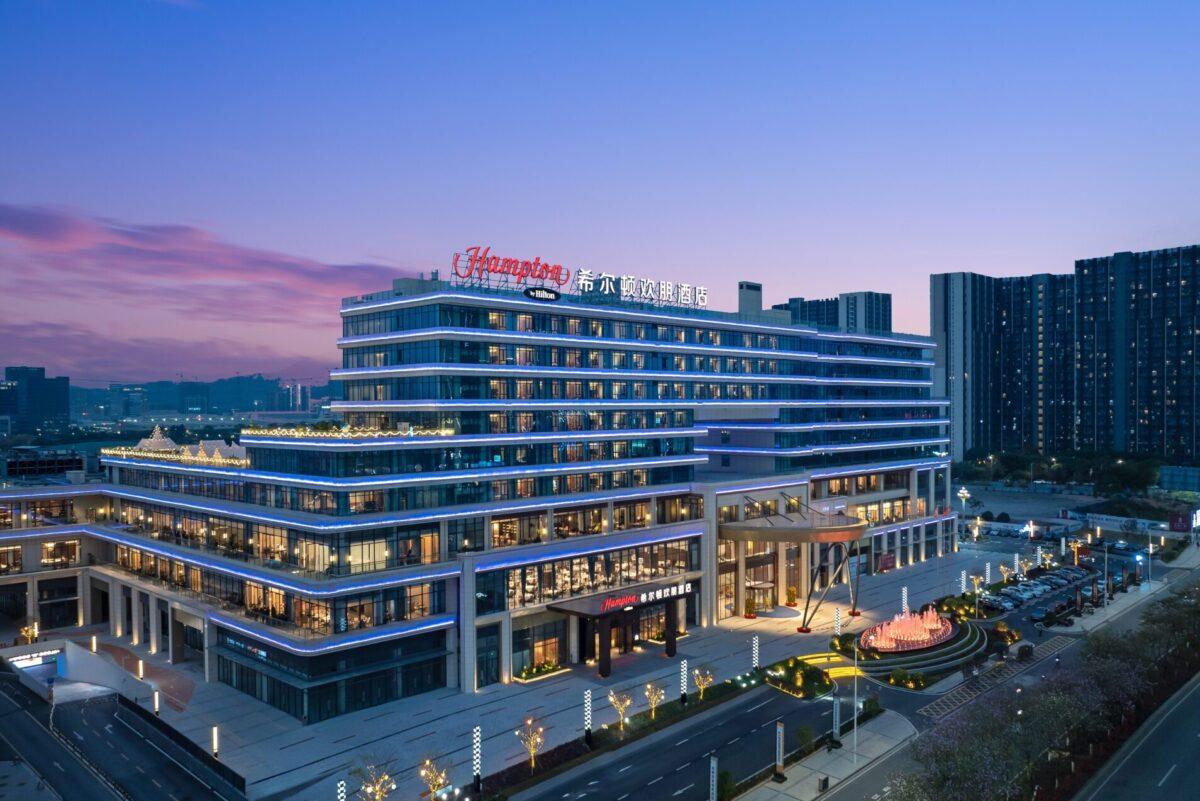Here are some of Hilton’s wins in Asia:
- One in every four hotels opened in Asia carries the Hilton flag.
- In China, that figure rises to one in three.
- Last month, Hilton reached 1,000 trading hotels in Asia Pacific, up from 761 at the end of last year and ahead of its goal of 1,000 trading hotels by 2025.
“We have also completed regionalization of Hampton by Hilton for deployment outside of China. We’ll also expand franchise opportunities for both Hilton Garden Inn and Hampton by Hilton,” said Alan Watts, the hotel company’s president for Asia-Pacific.
Hilton’s strategy in the Asia Pacific region hinges on regional relevance; It makes sure an offering resonates with domestic travelers before expanding further.
In India, this means leveraging popular Bollywood stars like Deepika Padukone and Siddharth Malhotra to build brand awareness, while offering WhatsApp-based services to cater to local preferences.
“Without domestic engines, if you try to trade in India off an international platform, as soon as you’re outside of the key cities, you won’t add any value, and people will only end up paying higher online travel agency (OTA) rates,” Watts said. “We regionalize everything — from training programs to local cuisine offerings.” And this ensures the brand is as relevant in Jaipur as it is in Jakarta.
China and India are central to Hilton’s growth plans, driven by their young populations and strong GDP growth.
In China, Hilton Garden Inn has become the go-to brand for smaller cities, where larger-format Hiltons may take years to materialize.
In India, Hilton’s partnership with Embassy Group is driving the expansion of mid-scale and focus-service hotels like Spark by Hilton. “We are on track to have 150 trading and pipeline hotels in India by 2028,” said Watts.
Luxury Meets Localization
Hilton’s luxury brands, including Waldorf Astoria and Conrad, are also expanding in the region. The hotel company operates three luxury brands in Asia Pacific: LXR, Conrad, and Waldorf Astoria. Success in this segment also requires balancing global standards with localized experiences, according to Watts.
“You want the aspiration of a Waldorf Astoria New York blended with unique regional flavors. In Jaipur, for example, it might mean curating bespoke wedding experiences,” he said.
Instagramable moments, innovative design, and food-and-beverage offerings tailored to local palates are increasingly critical in luxury markets like China and India.
“Hilton’s ability to mix the international strength of brands, platforms and influences, with a truly regionalized taste, has helped it to succeed,” said Watts.
How Hilton Looks at Franchising
Franchising is another cornerstone of Hilton’s Asia Pacific expansion. Watts said Hilton believes in partnering with companies that possess existing land banks and operational expertise. Recent agreements, such as a partnership in Vietnam for 14 focus-service hotels, highlight this model’s efficacy.
As Watts said, “We’re not a real estate owner. We’re a hotel management company. A brand-led company underpinned by owner returns.”
Watts pointed to Hampton by Hilton in China as a case study: “It’s a relatively speaking ‘bulletproof model,’ safe for both us to build our brand of reputation and the owners to execute to the brand standard. As the industry matures, we’ll franchise more brands.”
Hilton continues to grow its focused service portfolio in China, with more than 400 Hampton by Hilton hotels and almost 100 Hilton Garden Inn properties trading.
Hilton currently has 12 brands in the region, and Clarence Tan, senior vice president, development — Asia Pacific at Hilton, had earlier told Skift that it needs to introduce some of the new brands.
Building Customer Loyalty
Central to Hilton’s strategy is the Hilton Honors loyalty program. The hotel company wants to take its customers on a journey through its brands with the Hilton Honors loyalty program at the heart of it all.
By introducing customers to affordable options like Spark by Hilton, considered to be Hilton’s premium economy brand, and growing from there.
However, Watts points out that in all this consistency in service is key. “You want to make sure that you’re catching people at the bottom of the pyramid, and they’re moving up that brand train. And while doing this, they are experiencing this consistency and quality of experience.”
This loyalty-driven approach has also resonated with owners and investors. “At the end of the day, real estate investors and owners are yield-driven,” Watts noted. “Hilton delivers a profit premium of 19%, which is why we’ve done well in the last five years.”
Accommodations Sector Stock Index Performance Year-to-Date
What am I looking at? The performance of hotels and short-term rental sector stocks within the ST200. The index includes companies publicly traded across global markets, including international and regional hotel brands, hotel REITs, hotel management companies, alternative accommodations, and timeshares.
The Skift Travel 200 (ST200) combines the financial performance of nearly 200 travel companies worth more than a trillion dollars into a single number. See more hotels and short-term rental financial sector performance.
Read the full methodology behind the Skift Travel 200.

